- Home
- Jack London
The Strength of the Strong Page 7
The Strength of the Strong Read online
Page 7
Emil Gluck was immediately arrested. Nothing that he could do could save him. He was convicted, not merely on circumstantial evidence, but on evidence “cooked up” by the Oakland police. There is no discussion but that a large portion of the evidence was manufactured. The testimony of Captain Shehan was the sheerest perjury, it being proved long afterward that on the night in question he had not only not been in the vicinity of the murder, but that he had been out of the city in a resort on the San Leandro Road. The unfortunate Gluck received life imprisonment in San Quentin, while the newspapers and the public held that it was a miscarriage of justice-that the death penalty should have been visited upon him.
Gluck entered San Quentin prison on April 17, 1929. He was then thirty-four years of age. And for three years and a half, much of the time in solitary confinement, he was left to meditate upon the injustice of man. It was during that period that his bitterness corroded home and he became a hater of all his kind. Three other things he did during the same period: he wrote his famous treatise, Human Morals, his remarkable brochure, The Criminal Sane, and he worked out his awful and monstrous scheme of revenge. It was an episode that had occurred in his electroplating establishment that suggested to him his unique weapon of revenge. As stated in his confession, he worked every detail out theoretically during his imprisonment, and was able, on his release, immediately to embark on his career of vengeance.
His release was sensational. Also it was miserably and criminally delayed by the soulless legal red tape then in vogue. On the night of February 1, 1932, Tim Haswell, a hold-up man, was shot during an attempted robbery by a citizen of Piedmont Heights. Tim Haswell lingered three days, during which time he not only confessed to the murder of Irene Tackley, but furnished conclusive proofs of the same. Bert Danniker, a convict dying of consumption in Folsom Prison, was implicated as accessory, and his confession followed. It is inconceivable to us of to-day-the bungling, dilatory processes of justice a generation ago. Emil Gluck was proved in February to be an innocent man, yet he was not released until the following October. For eight months, a greatly wronged man, he was compelled to undergo his unmerited punishment. This was not conducive to sweetness and light, and we can well imagine how he ate his soul with bitterness during those dreary eight months.
He came back to the world in the fall of 1932, as usual a “feature” topic in all the newspapers. The papers, instead of expressing heartfelt regret, continued their old sensational persecution. One paper did more-the San Francisco Intelligencer. John Hartwell, its editor, elaborated an ingenious theory that got around the confessions of the two criminals and went to show that Gluck was responsible, after all, for the murder of Irene Tackley. Hartwell died. And Sherbourne died too, while Policeman Phillipps was shot in the leg and discharged from the Oakland police force.
The murder of Hartwell was long a mystery. He was alone in his editorial office at the time. The reports of the revolver were heard by the office boy, who rushed in to find Hartwell expiring in his chair. What puzzled the police was the fact, not merely that he had been shot with his own revolver, but that the revolver had been exploded in the drawer of his desk. The bullets had torn through the front of the drawer and entered his body. The police scouted the theory of suicide, murder was dismissed as absurd, and the blame was thrown upon the Eureka Smokeless Cartridge Company. Spontaneous explosion was the police explanation, and the chemists of the cartridge company were well bullied at the inquest. But what the police did not know was that across the street, in the Mercer Building, Room 633, rented by Emil Gluck, had been occupied by Emil Gluck at the very moment Hartwell’s revolver so mysteriously exploded.
At the time, no connection was made between Hartwell’s death and the death of William Sherbourne. Sherbourne had continued to live in the home he had built for Irene Tackley, and one morning in January, 1933, he was found dead. Suicide was the verdict of the coroner’s inquest, for he had been shot by his own revolver. The curious thing that happened that night was the shooting of Policeman Phillipps on the sidewalk in front of Sherbourne’s house. The policeman crawled to a police telephone on the corner and rang up for an ambulance. He claimed that some one had shot him from behind in the leg. The leg in question was so badly shattered by three ’38 calibre bullets that amputation was necessary. But when the police discovered that the damage had been done by his own revolver, a great laugh went up, and he was charged with having been drunk. In spite of his denial of having touched a drop, and of his persistent assertion that the revolver had been in his hip pocket and that he had not laid a finger to it, he was discharged from the force. Emil Gluck’s confession, six years later, cleared the unfortunate policeman of disgrace, and he is alive to-day and in good health, the recipient of a handsome pension from the city.
Emil Gluck, having disposed of his immediate enemies, now sought a wider field, though his enmity for newspaper men and for the police remained always active. The royalties on his ignition device for gasolene-engines had mounted up while he lay in prison, and year by year the earning power of his invention increased. He was independent, able to travel wherever he willed over the earth and to glut his monstrous appetite for revenge. He had become a monomaniac and an anarchist-not a philosophic anarchist, merely, but a violent anarchist. Perhaps the word is misused, and he is better described as a nihilist, or an annihilist. It is known that he affiliated with none of the groups of terrorists. He operated wholly alone, but he created a thousandfold more terror and achieved a thousandfold more destruction than all the terrorist groups added together.
He signalized his departure from California by blowing up Fort Mason. In his confession he spoke of it as a little experiment-he was merely trying his hand. For eight years he wandered over the earth, a mysterious terror, destroying property to the tune of hundreds of millions of dollars, and destroying countless lives. One good result of his awful deeds was the destruction he wrought among the terrorists themselves. Every time he did anything the terrorists in the vicinity were gathered in by the police dragnet, and many of them were executed. Seventeen were executed at Rome alone, following the assassination of the Italian King.
Perhaps the most world-amazing achievement of his was the assassination of the King and Queen of Portugal. It was their wedding day. All possible precautions had been taken against the terrorists, and the way from the cathedral, through Lisbon ’s streets, was double-banked with troops, while a squad of two hundred mounted troopers surrounded the carriage. Suddenly the amazing thing happened. The automatic rifles of the troopers began to go off, as well as the rifles, in the immediate vicinity, of the double-banked infantry. In the excitement the muzzles of the exploding rifles were turned in all directions. The slaughter was terrible-horses, troops, spectators, and the King and Queen, were riddled with bullets. To complicate the affair, in different parts of the crowd behind the foot-soldiers, two terrorists had bombs explode on their persons. These bombs they had intended to throw if they got the opportunity. But who was to know this? The frightful havoc wrought by the bursting bombs but added to the confusion; it was considered part of the general attack.
One puzzling thing that could not be explained away was the conduct of the troopers with their exploding rifles. It seemed impossible that they should be in the plot, yet there were the hundreds their flying bullets had slain, including the King and Queen. On the other hand, more baffling than ever was the fact that seventy per cent. of the troopers themselves had been killed or wounded. Some explained this on the ground that the loyal foot-soldiers, witnessing the attack on the royal carriage, had opened fire on the traitors. Yet not one bit of evidence to verify this could be drawn from the survivors, though many were put to the torture. They contended stubbornly that they had not discharged their rifles at all, but that their rifles had discharged themselves. They were laughed at by the chemists, who held that, while it was just barely probable that a single cartridge, charged with the new smokeless powder, might spontaneously explode, it was beyond all proba
bility and possibility for all the cartridges in a given area, so charged, spontaneously to explode. And so, in the end, no explanation of the amazing occurrence was reached. The general opinion of the rest of the world was that the whole affair was a blind panic of the feverish Latins, precipitated, it was true, by the bursting of two terrorist bombs; and in this connection was recalled the laughable encounter of long years before between the Russian fleet and the English fishing boats.
And Emil Gluck chuckled and went his way. He knew. But how was the world to know? He had stumbled upon the secret in his old electroplating shop on Telegraph Avenue in the city of Oakland. It happened, at that time, that a wireless telegraph station was established by the Thurston Power Company close to his shop. In a short time his electroplating vat was put out of order. The vat-wiring had many bad joints, and, on investigation, Gluck discovered minute welds at the joints in the wiring. These, by lowering the resistance, had caused an excessive current to pass through the solution, “boiling” it and spoiling the work. But what had caused the welds? was the question in Gluck’s mind. His reasoning was simple. Before the establishment of the wireless station, the vat had worked well. Not until after the establishment of the wireless station had the vat been ruined. Therefore the wireless station had been the cause. But how? He quickly answered the question. If an electric discharge was capable of operating a coherer across three thousand miles of ocean, then, certainly, the electric discharges from the wireless station four hundred feet away could produce coherer effects on the bad joints in the vat-wiring.
Gluck thought no more about it at the time. He merely re-wired his vat and went on electroplating. But afterwards, in prison, he remembered the incident, and like a flash there came into his mind the full significance of it. He saw in it the silent, secret weapon with which to revenge himself on the world. His great discovery, which died with him, was control over the direction and scope of the electric discharge. At the time, this was the unsolved problem of wireless telegraphy-as it still is to-day-but Emil Gluck, in his prison cell, mastered it. And, when he was released, he applied it. It was fairly simple, given the directing power that was his, to introduce a spark into the powder-magazines of a fort, a battleship, or a revolver. And not alone could he thus explode powder at a distance, but he could ignite conflagrations. The great Boston fire was started by him-quite by accident, however, as he stated in his confession, adding that it was a pleasing accident and that he had never had any reason to regret it.
It was Emil Gluck that caused the terrible German-American War, with the loss of 800,000 lives and the consumption of almost incalculable treasure. It will be remembered that in 1939, because of the Pickard incident, strained relations existed between the two countries. Germany, though aggrieved, was not anxious for war, and, as a peace token, sent the Crown Prince and seven battleships on a friendly visit to the United States. On the night of February 15, the seven warships lay at anchor in the Hudson opposite New York City. And on that night Emil Gluck, alone, with all his apparatus on board, was out in a launch. This launch, it was afterwards proved, was bought by him from the Ross Turner Company, while much of the apparatus he used that night had been purchased from the Columbia Electric Works. But this was not known at the time. All that was known was that the seven battleships blew up, one after another, at regular four-minute intervals. Ninety per cent. of the crews and officers, along with the Crown Prince, perished. Many years before, the American battleship Maine had been blown up in the harbour of Havana, and war with Spain had immediately followed-though there has always existed a reasonable doubt as to whether the explosion was due to conspiracy or accident. But accident could not explain the blowing up of the seven battleships on the Hudson at four-minute intervals. Germany believed that it had been done by a submarine, and immediately declared war. It was six months after Gluck’s confession that she returned the Philippines and Hawaii to the United States.
In the meanwhile Emil Gluck, the malevolent wizard and arch-hater, travelled his whirlwind path of destruction. He left no traces. Scientifically thorough, he always cleaned up after himself. His method was to rent a room or a house, and secretly to install his apparatus-which apparatus, by the way, he so perfected and simplified that it occupied little space. After he had accomplished his purpose he carefully removed the apparatus. He bade fair to live out a long life of horrible crime.
The epidemic of shooting of New York City policemen was a remarkable affair. It became one of the horror mysteries of the time. In two short weeks over a hundred policemen were shot in the legs by their own revolvers. Inspector Jones did not solve the mystery, but it was his idea that finally outwitted Gluck. On his recommendation the policemen ceased carrying revolvers, and no more accidental shootings occurred.
It was in the early spring of 1940 that Gluck destroyed the Mare Island navy-yard. From a room in Vallejo he sent his electric discharges across the Vallejo Straits to Mare Island. He first played his flashes on the battleship Maryland. She lay at the dock of one of the mine-magazines. On her forward deck, on a huge temporary platform of timbers, were disposed over a hundred mines. These mines were for the defence of the Golden Gate. Any one of these mines was capable of destroying a dozen battleships, and there were over a hundred mines. The destruction was terrific, but it was only Gluck’s overture. He played his flashes down the Mare Island shore, blowing up five torpedo boats, the torpedo station, and the great magazine at the eastern end of the island. Returning westward again, and scooping in occasional isolated magazines on the high ground back from the shore, he blew up three cruisers and the battleships Oregon, Delaware, New Hampshire, and Florida-the latter had just gone into dry-dock, and the magnificent dry-dock was destroyed along with her.
It was a frightful catastrophe, and a shiver of horror passed through the land. But it was nothing to what was to follow. In the late fall of that year Emil Gluck made a clean sweep of the Atlantic seaboard from Maine to Florida. Nothing escaped. Forts, mines, coast defences of all sorts, torpedo stations, magazines-everything went up. Three months afterward, in midwinter, he smote the north shore of the Mediterranean from Gibraltar to Greece in the same stupefying manner. A wail went up from the nations. It was clear that human agency was behind all this destruction, and it was equally clear, through Emil Gluck’s impartiality, that the destruction was not the work of any particular nation. One thing was patent, namely, that whoever was the human behind it all, that human was a menace to the world. No nation was safe. There was no defence against this unknown and all-powerful foe. Warfare was futile-nay, not merely futile but itself the very essence of the peril. For a twelve-month the manufacture of powder ceased, and all soldiers and sailors were withdrawn from all fortifications and war vessels. And even a world-disarmament was seriously considered at the Convention of the Powers, held at The Hague at that time.
And then Silas Bannerman, a secret service agent of the United States, leaped into world-fame by arresting Emil Gluck. At first Bannerman was laughed at, but he had prepared his case well, and in a few weeks the most sceptical were convinced of Emil Gluck’s guilt. The one thing, however, that Silas Bannerman never succeeded in explaining, even to his own satisfaction, was how first he came to connect Gluck with the atrocious crimes. It is true, Bannerman was in Vallejo, on secret government business, at the time of the destruction of Mare Island; and it is true that on the streets of Vallejo Emil Gluck was pointed out to him as a queer crank; but no impression was made at the time. It was not until afterward, when on a vacation in the Rocky Mountains and when reading the first published reports of the destruction along the Atlantic Coast, that suddenly Bannerman thought of Emil Gluck. And on the instant there flashed into his mind the connection between Gluck and the destruction. It was only an hypothesis, but it was sufficient. The great thing was the conception of the hypothesis, in itself an act of unconscious cerebration-a thing as unaccountable as the flashing, for instance, into Newton ’s mind of the principle of gravitation.
The rest was easy. Where was Gluck at the time of the destruction along the Atlantic sea-board? was the question that formed in Bannerman’s mind. By his own request he was put upon the case. In no time he ascertained that Gluck had himself been up and down the Atlantic Coast in the late fall of 1940. Also he ascertained that Gluck had been in New York City during the epidemic of the shooting of police officers. Where was Gluck now? was Bannerman’s next query. And, as if in answer, came the wholesale destruction along the Mediterranean. Gluck had sailed for Europe a month before-Bannerman knew that. It was not necessary for Bannerman to go to Europe. By means of cable messages and the co-operation of the European secret services, he traced Gluck’s course along the Mediterranean and found that in every instance it coincided with the blowing up of coast defences and ships. Also, he learned that Gluck had just sailed on the Green Star liner Plutonic for the United States.
The case was complete in Bannerman’s mind, though in the interval of waiting he worked up the details. In this he was ably assisted by George Brown, an operator employed by the Wood’s System of Wireless Telegraphy. When the Plutonic arrived off Sandy Hook she was boarded by Bannerman from a Government tug, and Emil Gluck was made a prisoner. The trial and the confession followed. In the confession Gluck professed regret only for one thing, namely, that he had taken his time. As he said, had he dreamed that he was ever to be discovered he would have worked more rapidly and accomplished a thousand times the destruction he did. His secret died with him, though it is now known that the French Government managed to get access to him and offered him a billion francs for his invention wherewith he was able to direct and closely to confine electric discharges. “What!” was Gluck’s reply-“to sell to you that which would enable you to enslave and maltreat suffering Humanity?” And though the war departments of the nations have continued to experiment in their secret laboratories, they have so far failed to light upon the slightest trace of the secret. Emil Gluck was executed on December 4, 1941, and so died, at the age of forty-six, one of the world’s most unfortunate geniuses, a man of tremendous intellect, but whose mighty powers, instead of making toward good, were so twisted and warped that he became the most amazing of criminals.

 The Son of the Wolf
The Son of the Wolf The Iron Heel
The Iron Heel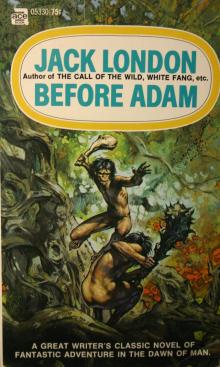 Before Adam
Before Adam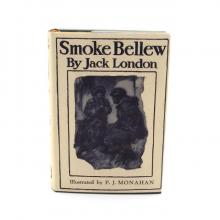 Smoke Bellew
Smoke Bellew The Call of the Wild
The Call of the Wild The Valley of the Moon Jack London
The Valley of the Moon Jack London Burning Daylight
Burning Daylight The Sea Wolf
The Sea Wolf White Fang
White Fang A Daughter of the Snows
A Daughter of the Snows The Night-Born
The Night-Born A Son Of The Sun
A Son Of The Sun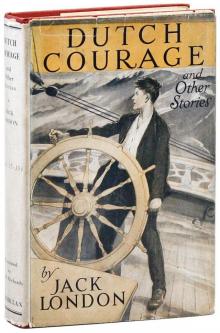 Dutch Courage and Other Stories
Dutch Courage and Other Stories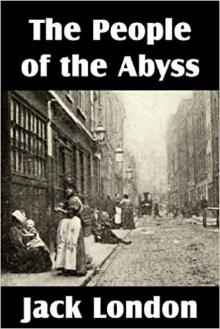 The People of the Abyss
The People of the Abyss Michael, Brother of Jerry
Michael, Brother of Jerry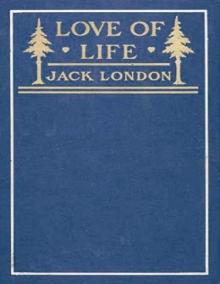 Love of Life, and Other Stories
Love of Life, and Other Stories Lost Face
Lost Face The Road
The Road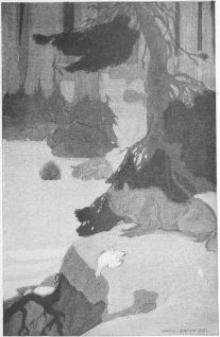 Love of Life
Love of Life The Turtles of Tasman
The Turtles of Tasman The Cruise of The Dazzler
The Cruise of The Dazzler The Heathen
The Heathen The Scab
The Scab The Faith of Men
The Faith of Men Adventure
Adventure The Assassination Bureau, Ltd.
The Assassination Bureau, Ltd. The Call of the Wild, White Fang, and Other Stories
The Call of the Wild, White Fang, and Other Stories The Call of the Wild and Selected Stories
The Call of the Wild and Selected Stories Jerry of the Islands
Jerry of the Islands Hearts of Three
Hearts of Three The House of Pride
The House of Pride Moon-Face and Other Stories
Moon-Face and Other Stories Children of the Frost
Children of the Frost South Sea Tales
South Sea Tales The Strength of the Strong
The Strength of the Strong The Jacket (The Star-Rover)
The Jacket (The Star-Rover) The Little Lady of the Big House
The Little Lady of the Big House John Barleycorn
John Barleycorn ADaugter of Snows
ADaugter of Snows The Mutiny of the Elsinore
The Mutiny of the Elsinore Northland Stories
Northland Stories Tales of the Fish Patrol
Tales of the Fish Patrol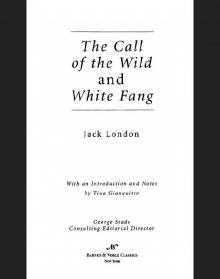 Call of the Wild and White Fang (Barnes & Noble Classics Series)
Call of the Wild and White Fang (Barnes & Noble Classics Series) The Valley of the Moon
The Valley of the Moon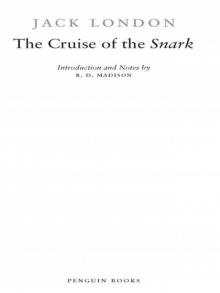 The Cruise of the Snark
The Cruise of the Snark The Game
The Game An Autobiography of Jack London
An Autobiography of Jack London